Polishing
Obviously you can do this by hand if so Autoglym super resin polish is good...
But we are talking about detailing so taking it up a notch lets have a look at Machine polishers...
There are 2 basic types
Random Orbit (aka Dual action ((DA)))
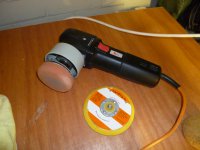
(this is the safest for novices however a rotary isn't the savage beast as by some make out) it moves in a circular movement but with a added side shift aka throw) Think of the pattern a spirograph made when you was a kid thats how it moves....
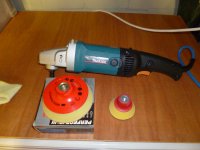
And Rotary Just goes round and round on a fixed orbit.... it is much faster in terms of rate of work but has the risk of working hotter due to increased friction.....
anyhow here is my first go with the DA....
https://www.fiatforum.com/car-care/182419-started-machine-polish-gp.html
You will need a selection of pads and the matching backing plates to fit the machine you have

the pads come in 3 main types
Cutting (most aggressive)
Polishing (medium aggressiveness)
Finishing (very gentle)
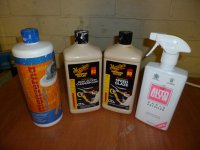
obviously Polish comes in many grades too but its very easy to confuse yourself but think like this
Cutting pad + coarse polish = Very fast paint removal
Finishing pad + Finishing polish = very little removal
cutting pad + Finishing polish = Moderate removal
Time to go down the scrap yard and get a bonnet of a car similar to what you want to work on to get some practice on rather than risk damaging your own car........
zenith point technique
and look on You tube for junkman2000 he has some very good polishing videos

A Paint thickness gauge is a very wise investment unsurprisingly it allows you to measure how deep the paint is...
(however unless you spend a small fortune you will not find one that measures paint thickness on plastic panels and bumpers )
A basic one will set you back about £80 but is far cheaper than a respray (again i could write an entire guide on how to use one)
But basics... go round the car / panel and make a note of how much paint there is in an area a really rapid jump to a high thickness probably means its had a respray in the past......
Next open the door and measure the thickness in the door jamb.... (often the thinnest coating on the car is in the door shut area due to the spray methods used....) so subtract the panel thickness from the door shut thickness and this = a good indication of what there is left to play with i try not to go to more than half this to be on the safe side... Always aim to remove the minimum amount as then you have a safety net should it need polishing again....
Again scrap panel practice comes in handy... to see what your method is likely to remove..
During the polishing keep measuring with the PTG to keep an eye on removal rate (a note book comes in handy) even better is a outline line drawing of the car to mark your measurements on
you will also find panel edges are thinner than in the centre so try to avoid machining the last 10mm or so on the edge and finish by hand.... (masking tape comes in handy here)
eg below 87um in the bonnet centre and 69um on the edge....

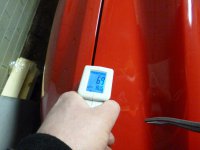
A basic halogen flood lamp is ideal for showing defects and swirls a double tripod even better...
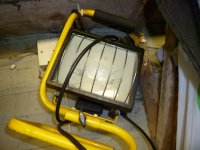
before

during
Depending on the pad size and temperature i tend to use 4 ish skittle size blobs of polish on a 6" pad and a spritz of Quick detailer spray to help keep the polish workable
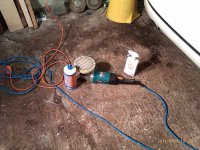
After


